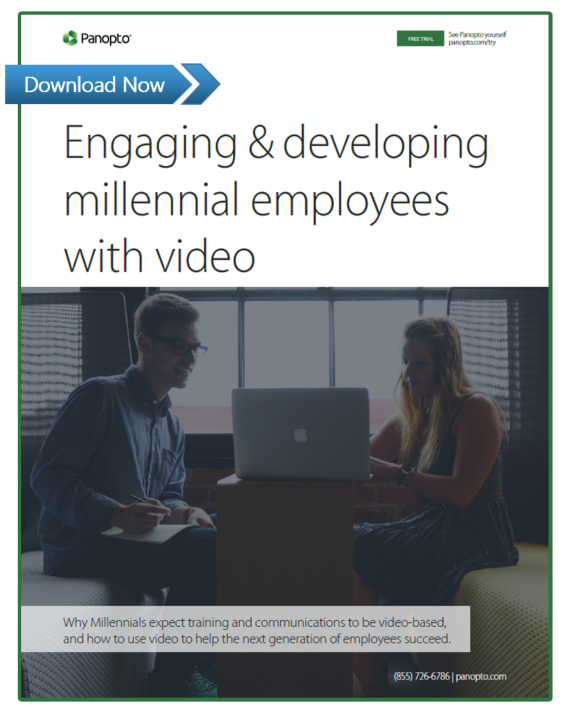- Flipped Classroom
Millennials Are Used To Learning With Video. Does Your Employee Training Take Advantage?
As final year students enter their last term at university, there are likely to be two big things on their minds. The first, naturally, will be their impending exams. And a close second will be where they’ll work after they graduate.
For graduate recruiters too, the imminent arrival of new staff members creates no short list of questions to answer.
- How can large numbers of employees all with different backgrounds and expectations be trained effectively?
- How can new grads — many of whom have little to no real workplace experience — be brought up to speed as quickly as possible?
- What are the best ways of engaging with these graduates to ensure they absorb large amounts of employee training material and retain what they’ve learned?
As organizations seek out the best answers to these questions, one smart place to begin is considering how these new recruits have already been learning.
Higher education institutions across the world have already had to adjust their teaching approaches to respond to the impact of technology on student expectations. The businesses that will hire these graduates can learn a lot from forward-thinking universities that have moved from more traditional approaches to blended learning styles that integrate innovative technologies.
Blended Learning: Instruction that’s ready anytime, anywhere
The new mantra of ‘anytime, anywhere learning’ — with its focus on making educational resources accessible on-demand, whatever device someone is using — is equally applicable in the corporate world. And, as universities already know, video has a critical role to play in supporting effective learning practices in the new blended model.
You only need to look at the rise and rise of YouTube and the popularity of TED talks to see that video has become a pervasive and increasingly dominant aspect of the modern communications landscape.
Universities have been quick to embrace technologies like lecture capture and video-based teaching methodologies like the flipped classroom. This has allowed them to help their students learn key concepts at their own pace and open up face-to-face time for more in-depth discussion on core topics.
With increasing numbers of higher education institutions using video to support learning across their whole campus, accordingly, graduates arrive at the workplace having had considerable exposure to video-enabled learning.
Opportunity meets technology
As companies think more about their upcoming intake of graduates and the expectations these new recruits are likely to have, they need to consider the important role video can play in bridging the gap between how recruits will have been acquiring knowledge at university and how this will translate into the workplace.
For instance, filming employee onboarding and induction sessions and making them available on-demand – in much the same way as a university would record a lecture – gives new starters the ability to go back and review important employee training material at a later date.
Similarly, creating bite-sized video learning chunks and distributing to new staff members to bring them up to speed before a formal training session mimics the flipped classroom approach that is becoming increasingly popular at education institutions.

Learn More About Engaging Millennial Workers
These lessons are set to become ever more relevant to organizations that regularly recruit recent graduates. If you’d like to learn more about how you can use video as part of an effective graduate induction and development process, download a free copy of our latest white paper: Engaging & Developing Millennial Employees With Video.


